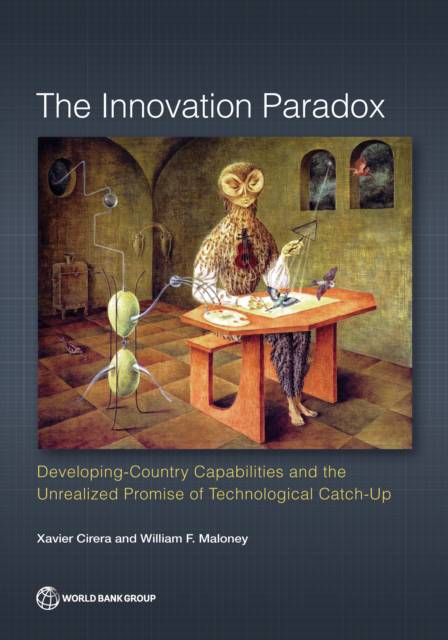
- Afhalen na 1 uur in een winkel met voorraad
- Gratis thuislevering in België vanaf € 30
- Ruim aanbod met 7 miljoen producten
- Afhalen na 1 uur in een winkel met voorraad
- Gratis thuislevering in België vanaf € 30
- Ruim aanbod met 7 miljoen producten
Zoeken
The Innovation Paradox
Developing-Country Capabilities and the Unrealized Promise of Technological Catch-Up
Xavier Cirera, William F Maloney
Paperback | Engels
€ 45,45
+ 90 punten
Omschrijving
Since Schumpeter, economists have argued that vast productivity gains can be achieved by investing in innovation and technological catch-up. Yet, as this volume documents, developing country firms and governments invest little to realize this potential, which dwarfs international aid flows. Using new data and original analytics, the authors uncover the key to this innovation paradox in the lack of complementary physical and human capital factors, particularly firm managerial capabilities, that are needed to reap the returns to innovation investments. Hence, countries need to rebalance policy away from R and D-centered initiatives - which are likely to fail in the absence of sophisticated private sector partners - toward building firm capabilities, and embrace an expanded concept of the National Innovation System that incorporates a broader range of market and systemic failures. The authors offer guidance on how to navigate the resulting innovation policy dilemma: as the need to redress these additional failures increases with distance from the frontier, government capabilities to formulate and implement the policy mix become weaker. This book is the first volume of the World Bank Productivity Project, which seeks to bring frontier thinking on the measurement and determinants of productivity to global policy makers.
Specificaties
Betrokkenen
- Auteur(s):
- Uitgeverij:
Inhoud
- Aantal bladzijden:
- 214
- Taal:
- Engels
Eigenschappen
- Productcode (EAN):
- 9781464811609
- Verschijningsdatum:
- 2/10/2017
- Uitvoering:
- Paperback
- Formaat:
- Trade paperback (VS)
- Afmetingen:
- 175 mm x 251 mm
- Gewicht:
- 421 g

Alleen bij Standaard Boekhandel
+ 90 punten op je klantenkaart van Standaard Boekhandel
Beoordelingen
We publiceren alleen reviews die voldoen aan de voorwaarden voor reviews. Bekijk onze voorwaarden voor reviews.








